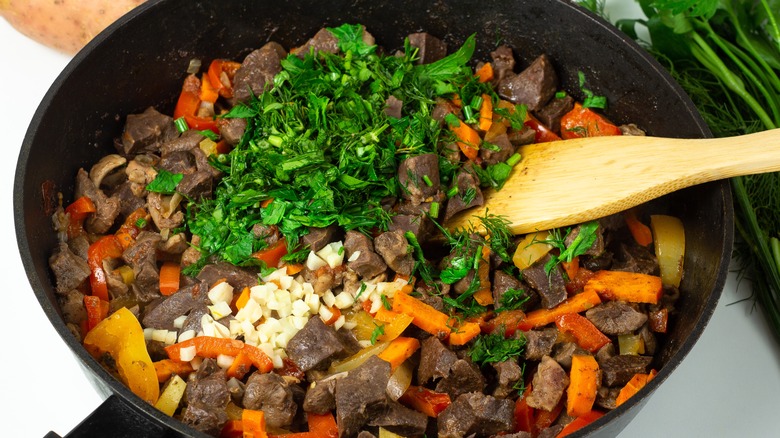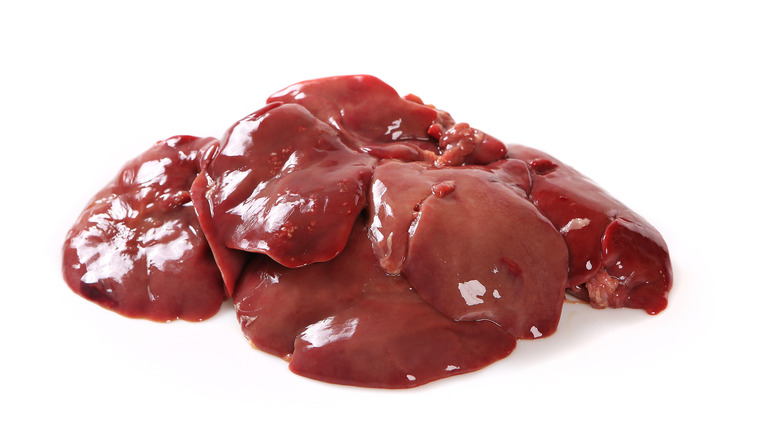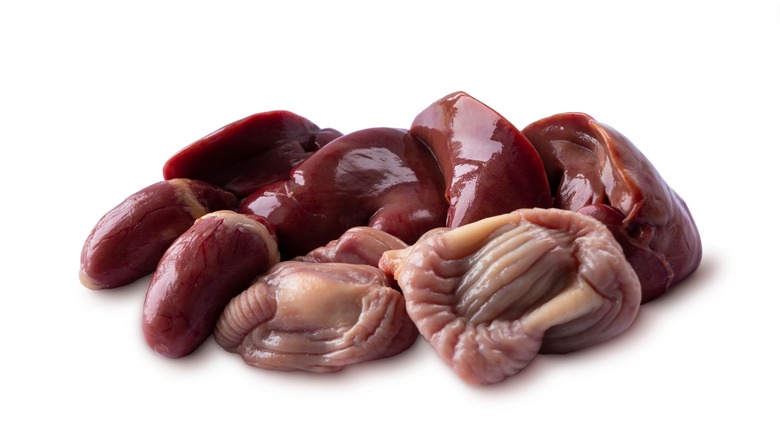What Is Offal And Is It Good For You?
Whether you're looking to expand your eating habits with something a bit more exotic or seeking out the best options for the most nutrient-dense foods, offal might be something that piques your interest. Though it's not a popularly consumed item in Western diets, offal is still considered a staple food item for many other cultural palettes. In fact, many Americans currently only consume the prime cuts of muscle tissue, leaving the greater percentage of the animal to be discarded or repurposed for other products, according to WebMD. Offal does still have some presence in Western diets, however, serving as casings for hot dogs and sausages as well as holding place in specialized dishes like foie gras or chitterlings (via Today's Dietitian).
However, a number of biological animal products, like fat, can be used to provide a more primitive daily plate. Trend diets, like the Paleo diet, have brought some attention to cast-off practices involving a more incorporative use of butchered animals, like using healthy fats from animals in cooking in lieu of processed or artificial oils, writes Paleo Leap. Yet, some of the more nutritionally beneficial parts of the animal are being overlooked, like offal. Despite the nutritious advantages, many individuals are hesitant to try offal or incorporate it into their regular diet.
What is offal?
Offal is a term that refers to the organ meats of specific animals such as chickens, ducks, lambs, goats, and cows, according to Healthline. In most instances, particularly in the United States, when individuals consume meat, they are primarily consuming the muscle tissues, fat, and sometimes the skin. Animal bones can and often are used to make nutrient-packed bone broths that can be used for soups and other meals (via Paleo Leap). However, for some, the thought of cooking and eating organ meats seems a bit too close to a Halloween prank rather than a delicious meal.
The organ meats that are commonly lumped together under the term offal include the heart, liver, kidneys, brain, tongue, sweetbreads (the thymus gland and pancreas), and tripe (the lining of the animal's stomach), says Healthline, though the list can be more or less inclusive depending on the culture or area. For example, in some cultures, the definition of offal includes all parts of the animal except for the muscle tissue and bones (via Today's Dietitian).
Offal can be prepared in very similar methods to traditional meats. Depending on the cut, the dish can be grilled, baked, roasted, and sometimes prepared and served raw. For individuals who may be struggling to consume the parts whole, they can be ground and added into other minced meat, such as ground beef, pork, or turkey, for an additional boost of nutrients, according to Today's Dietitian.
Is offal good for you?
The nutritional benefits of offal can vary a bit, depending on the particular part that is being consumed and the quality of the animals' care, explains Medical News Today. Offal holds a host of vitamins and minerals including iron, vitamin A, vitamin D, vitamin E, vitamin K, copper, and magnesium. For example, a serving of 3.5 ounces of liver contains 27 grams of protein while only containing 127 calories and offering up significant percentages of nine other essential nutrients (via Healthline). Some parts, like the brain, offer additional benefits like a boost of omega-3 fatty acids which are beneficial to brain health, according to Medical News Today.
But before you run to your nearest butcher to add these superfood organs to your diet, there are a few things you should know. First, Medical News Today reports that most offal is high in both cholesterol and saturated fats. Additionally, another concern comes from the environment in which the animal was raised. Animals raised consuming produce or grass treated with pesticides could pose potential health complications due to ingested toxins. However, if you're in good health and do not have any issues with cholesterol, the addition of offal to your diet might be a good choice for you.



